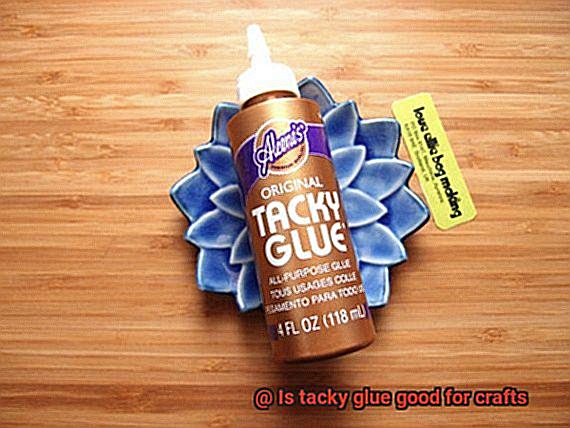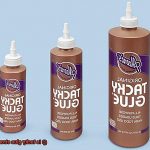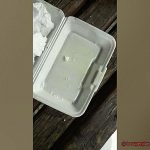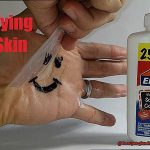Are you itching to dive into a new craft project but feeling stuck on which adhesive to use? Well, fret no more because I’ve got the answer for you: tacky glue. This magical adhesive has become a go-to for craft enthusiasts everywhere, and for good reason. It’s like the superhero of glues, capable of bonding all sorts of materials together with ease. Whether you’re working with paper, fabric, wood, or even plastic, tacky glue has got your back.
One of the best things about tacky glue is its reliability. When you’re putting your heart and soul into a craft project, the last thing you want is for it to fall apart at the seams (literally). But fear not. Tacky glue forms a strong bond that can withstand the test of time. So go ahead and create those intricate paper sculptures or fashion those fabulous fabric creations – tacky glue will make sure they stay intact.
But wait, there’s more. Tacky glue doesn’t just provide a sturdy hold; it also dries clear. That means no more worrying about unsightly residue ruining your masterpiece. You can proudly display your crafts without any distractions from globs of dried glue. It’s like magic.
In this blog post, we’re going to delve into the wonderful world of tacky glue. We’ll explore its benefits and practical uses in crafts so that you can achieve professional-grade results in all your projects. So grab your materials, roll up your sleeves, and let’s get ready to unleash our creativity with the help of trusty old tacky glue.
What is Tacky Glue?
Contents
- 1 What is Tacky Glue?
- 2 Advantages of Using Tacky Glue
- 3 Disadvantages of Using Tacky Glue
- 4 Alternatives to Tacky Glue
- 5 Different Types of Crafts That Can Use Tacky Glue
- 6 How to Use and Store Tacky Glue Properly
- 7 Tips for Making the Most Out of Your Tacky Glue Projects
- 8 Common Mistakes When Using Tacky Glue
- 9 Conclusion
Crafting is a beloved hobby that allows us to bring our ideas to life and express our creativity. Whether you’re a seasoned crafter or just starting out, having the right adhesive is crucial for successful projects. Tacky glue has emerged as a popular choice in the crafting community due to its unique characteristics, numerous benefits, and incredible versatility. In this article, we will delve into the world of tacky glue, exploring its composition, advantages, and wide range of applications.
Characteristics of Tacky Glue:
Tacky glue is a viscous, white adhesive that dries clear, making it perfect for projects where the adhesive needs to be invisible. Its distinct consistency sets it apart from regular liquid glue, boasting a thicker texture that offers superior precision and control. Unlike its counterparts that tend to drip or run, tacky glue stays put, making it ideal for delicate crafts or vertical surfaces.
Benefits of Tacky Glue:
- Strong Bond: Tacky glue’s remarkable feature lies in its ability to create a powerful bond between various materials including paper, fabric, wood, plastic, foam, and even some metals. This versatility makes it an exceptional choice for a wide range of craft projects.
- Quick Drying Time: Crafting demands efficiency, and tacky glue delivers just that. With its fast-drying properties, tacky glue sets within 30 minutes to an hour. This means you can continue working on your project without lengthy waiting periods.
- Flexibility: Unlike some adhesives that become brittle when dry, tacky glue remains flexible. This ensures that your glued surfaces can move or bend without cracking or breaking the bond. It’s perfect for crafts that require durability over time.
Versatility of Tacky Glue:
Tacky glue’s versatility knows no bounds when it comes to craft projects. Here’s a glimpse of its numerous applications:
- Scrapbooking: Tacky glue is a staple in scrapbooking, allowing you to securely attach photos, embellishments, and various paper elements. Its clear drying property ensures a polished finish.
- Cardmaking: When creating handmade cards, tacky glue is perfect for adhering cardstock, die cuts, ribbons, and even lightweight trinkets. Its quick drying time lets you assemble cards efficiently.
- Jewelry Making: Tacky glue is an excellent adhesive for jewelry making involving beads, gemstones, and metal findings. It provides a strong bond that withstands the wear and tear of everyday use.
- General Crafting: Whether you’re working on a school project or a DIY home decor piece, tacky glue is your go-to adhesive. Its versatility allows you to bond different materials together with ease.
Advantages of Using Tacky Glue
Look no further than tacky glue. This versatile and reliable adhesive is a must-have in any craft enthusiast’s toolkit. In this article, we will explore the advantages of using tacky glue for your crafting projects, from its versatility and strong bond to its quick drying time, non-toxic nature, easy application, reversibility, and affordability. So, grab your glue gun and let’s dive into the world of tacky glue.
Versatility:
Tacky glue is like a chameleon in the crafting world – it can adhere to various materials with ease. Whether you’re working with paper, fabric, wood, or plastic, tacky glue has got you covered. No more juggling multiple types of glue for different materials; tacky glue simplifies your crafting process and saves you valuable time.
Strong Bond:
Crafting projects come in all shapes and sizes, and tacky glue rises to the challenge. Its strong adhesive properties create reliable bonds that hold materials together securely. Whether you’re creating delicate paper cutouts or constructing a sturdy wooden structure, rest assured that tacky glue will provide the necessary strength and durability for your masterpiece.
Quick Drying Time:
In the fast-paced world of crafting, waiting hours or even days for glue to dry is simply not an option. Tacky glue understands your need for speed. With its quick drying time, you can move on to the next step of your project without delay. Say goodbye to endless waiting and hello to efficient crafting.
Non-Toxic and Safe:
Crafting should be a safe and enjoyable experience for everyone, including children. Tacky glue is generally non-toxic and safe to use, making it suitable for crafters of all ages. You can let your little ones join in on the fun without worrying about harmful chemicals. However, it’s always a good idea to check the specific brand and product label for any safety information or precautions.
Easy Application:
Crafting is all about precision, and tacky glue understands that. Its thick and sticky consistency allows for easy application, ensuring precise and controlled gluing. Whether you’re attaching intricate paper cutouts or adding small embellishments to your project, tacky glue’s applicator tips and squeeze bottles make it a breeze to work with.
Reversible:
We all make mistakes, especially when crafting. But fear not. Tacky glue is your crafting savior with its reversibility feature. Unlike some other glues that create permanent bonds, tacky glue allows you to reposition or remove glued items if needed. So go ahead, experiment with different design layouts, and make adjustments on the fly – tacky glue has your back.
Disadvantages of Using Tacky Glue
It’s important to consider the disadvantages of using tacky glue before diving into your next project. Let’s explore some of these potential downsides in detail.
One major drawback of using tacky glue is its long drying time. Unlike other types of glue that dry quickly, tacky glue takes a considerable amount of time to fully dry. This can be frustrating, particularly when working on time-sensitive craft projects or when you need to move on to the next step. The extended drying time can also lead to accidental smudging or shifting of the glued materials if not handled with caution.
Another disadvantage is that tacky glue may not be suitable for all materials. While it works well for many craft projects, it may struggle to adhere strongly to smooth or non-porous surfaces like glass, metal, or plastic. Additionally, tacky glue does not bond well with fabrics, making it less suitable for sewing or textile crafts. It’s crucial to consider the specific materials you are working with before opting for tacky glue as your adhesive.
Furthermore, tacky glue has a relatively lower bond strength compared to other types of adhesives like super glue or epoxy. This means that it may not be ideal for heavy-duty crafts or projects that require a strong and durable bond. If you are working on projects that involve significant weight or stress on the glued parts, it’s advisable to explore alternative glues that offer higher bond strength.

Tacky glue can also be messy to work with. Its thick and sticky consistency can make precise and neat application challenging. It tends to spread easily and may leave visible residues or strings when used excessively. Additionally, if not stored properly, tacky glue can dry out and become difficult to use, resulting in wasted product and additional expenses.
Lastly, tacky glue is not the best choice for precise and detailed work. Its relatively thick consistency makes it difficult to apply tiny amounts of glue in intricate areas or small components. This limitation makes tacky glue less suitable for delicate crafts that require precise adhesive application. In such cases, opting for a glue with a finer applicator or using alternative adhesives like glue dots or double-sided tape may be a better choice.
Alternatives to Tacky Glue
There exists a vast array of alternatives to tacky glue that can elevate your crafting endeavors to new heights.
Enter hot glue, the hero of the crafting world. With its versatility and steadfast bond, hot glue guns can securely adhere fabric, wood, plastic, and even metal. Just remember to handle with care, as this fiery adhesive can leave a blistering mark if mishandled.
Craft glue, a specialized adhesive formulated for arts and crafts, is another top contender. Non-toxic and transparent when dry, it works wonders on porous surfaces such as paper, cardboard, and foam. The possibilities are endless.
For projects demanding an unyielding bond, look no further than epoxy resin. This two-part adhesive hardens into a crystal-clear finish that can withstand the elements with ease. Jewelry making and sculpting enthusiasts swear by its resilience.
If non-toxicity is your priority, white school glue saves the day. Though not as robust as its counterparts, it excels in lightweight crafts and projects involving paper and cardboard.
Convenience calls for double-sided tape. Instantly bonding without any drying time, it is a staple in scrapbooking and card making.
When working with fabric, fabric glue becomes an indispensable ally. Its strong bond endures countless washes and dryings without harming the delicate threads.
Feeling adventurous? Whip up your own homemade glue using humble ingredients like flour, water, and vinegar. This eco-friendly option is perfect for quick crafts or temporary bonding needs.
Different Types of Crafts That Can Use Tacky Glue
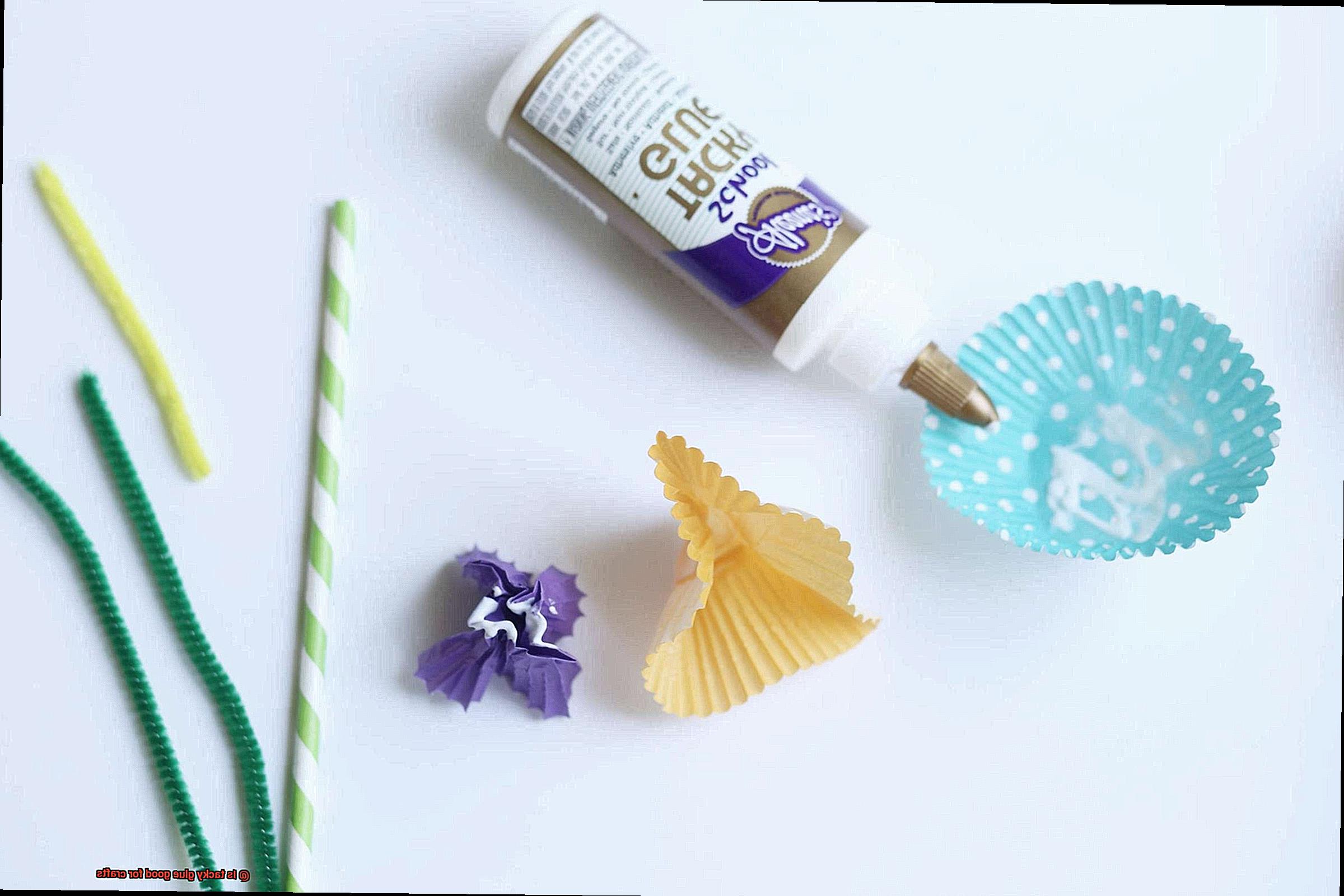
Calling all crafters. Are you ready to unleash your creativity? Well, grab your trusty tacky glue because we’re about to dive into the wonderful world of crafts. Tacky glue is a versatile adhesive that can be used for a wide range of projects.
Whether you’re an experienced crafter or a beginner, tacky glue is a must-have in your craft arsenal. So, let’s explore the different types of crafts that can be made using this magical adhesive.
Paper Crafting:
Let’s start with the classic craft of paper crafting. Tacky glue is perfect for sticking together different pieces of paper and creating beautiful collages, intricate designs, or even paper sculptures.
Its strong bond ensures that your creations stay intact, and its clear drying feature means no messy residue. From scrapbooking to card making, tacky glue is a must-have for all your paper crafting adventures.
Fabric Fun:
Are you ready to create stunning fabric crafts without sewing? Tacky glue has got your back. It can securely bond fabric pieces together, making it an excellent alternative to stitching. Whether you’re working on a sewing project or creating fabric-based crafts like felt ornaments or fabric flowers, tacky glue will keep everything in place without leaving any visible marks. So, grab your fabrics and unleash your imagination.
Jewelry Making:
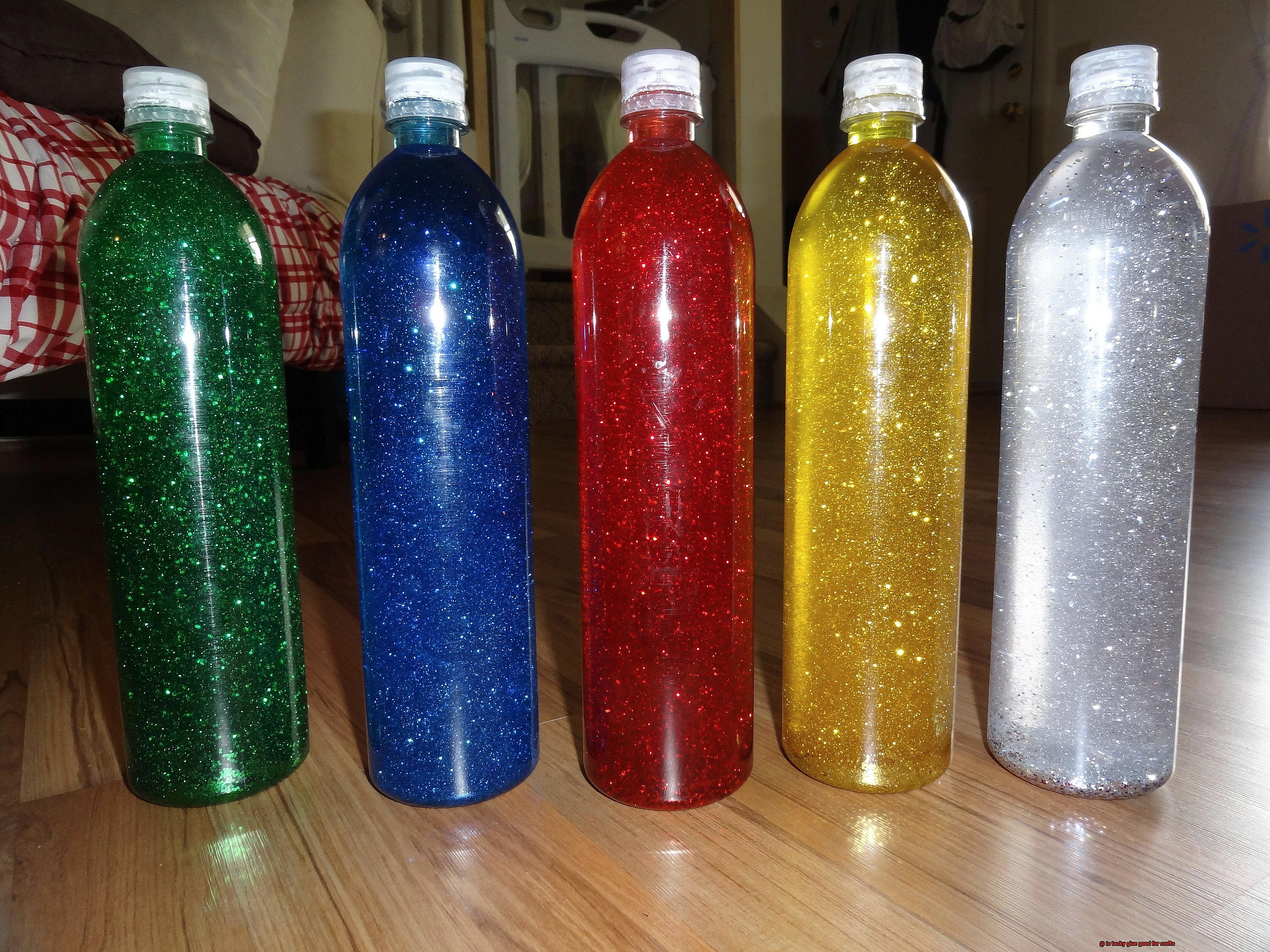
Attention jewelry enthusiasts. Tacky glue is here to make your creations shine even brighter. Use it to attach beads, gemstones, and other embellishments to various surfaces such as metal, plastic, or glass. Its strong bond ensures that your jewelry pieces will stay intact, no matter how much you dazzle and shine. With tacky glue, you can create stunning necklaces, bracelets, earrings, and more.
Kids’ Crafts:
Parents and teachers, listen up. Tacky glue is a popular choice for kids’ crafts due to its safety and ease of use. Whether your little ones are creating collages, sticking together popsicle sticks, or making foam shapes, tacky glue is the go-to adhesive.
Its non-toxic nature ensures that creativity can flow freely while keeping their masterpieces secure.
So, let the little crafters unleash their imagination with tacky glue by their side.
Woodworking Wonders:
Woodworking projects just got a whole lot better with tacky glue. This adhesive can be used to join wooden pieces together, providing a strong and durable bond. Whether you’re building furniture, creating wooden toys, or adding decorative elements to wooden surfaces, tacky glue will ensure that your woodworking projects stand the test of time. So, get your tools ready and let tacky glue be your woodworking companion.
How to Use and Store Tacky Glue Properly
Crafting with tacky glue can be a fun and rewarding experience, but it’s important to know how to use and store it properly. In this comprehensive guide, we’ll walk you through the steps of applying tacky glue effectively and storing it for future use. With these tips, you’ll be able to create beautiful crafts with confidence.
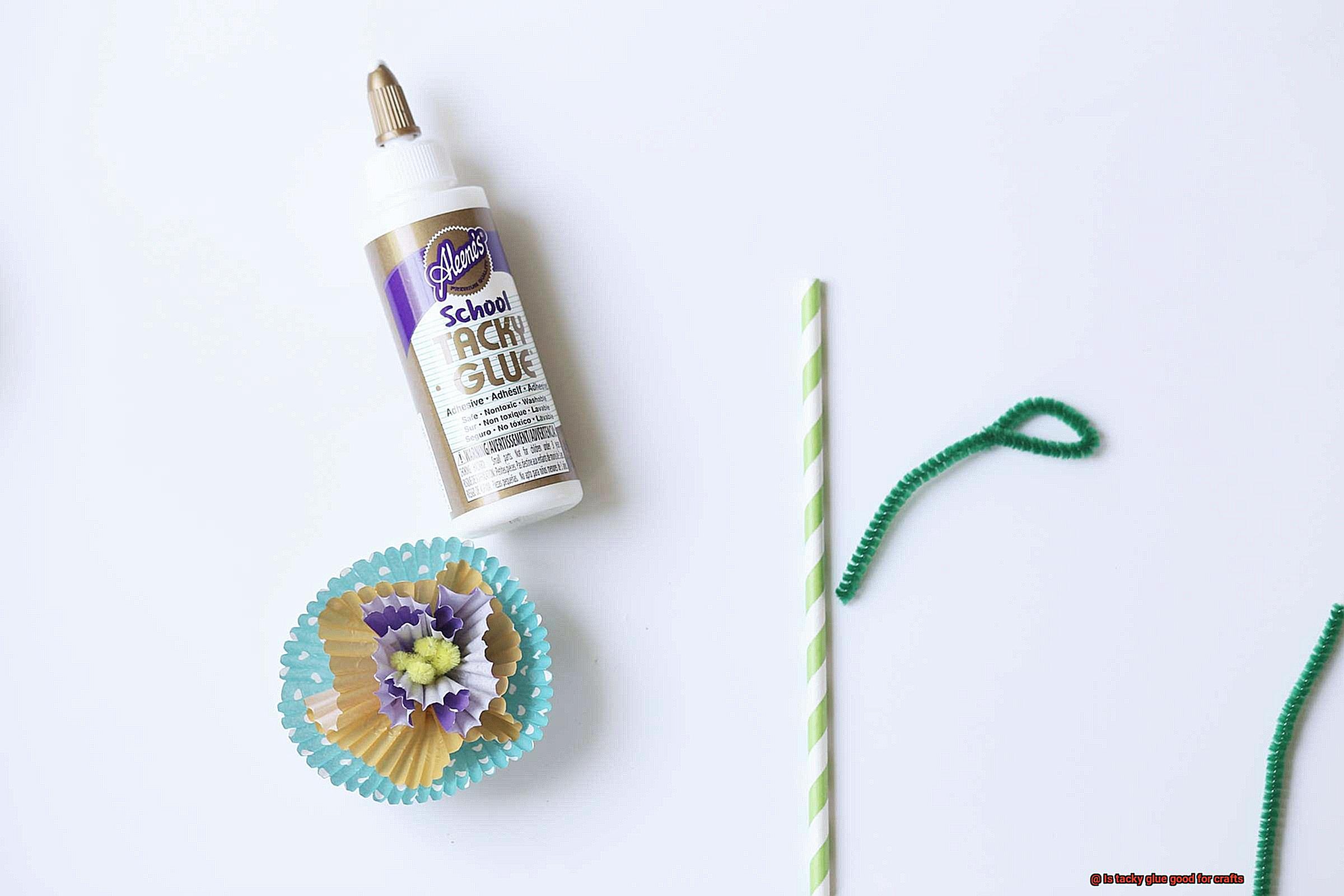
Preparing the Surface:
Before diving into your project, take a moment to prepare the surface where you’ll be applying the tacky glue. Cleanliness is key. Ensure that the surface is clean, dry, and free from any dust or debris. Give it a quick wipe down with a damp cloth or tissue to create a smooth and pristine base for the glue.
Applying Tacky Glue:
Using tacky glue is all about finding the perfect balance. Start by squeezing a small amount of glue onto a disposable surface like a paper plate or wax paper. Then, grab a brush or toothpick and spread the glue evenly and thinly on the desired surface. Remember, less is more. Applying too much glue can lead to messy results, so go easy and let the glue work its magic.
Drying Time:
Patience is a virtue when it comes to tacky glue. Allow your project ample time to dry and set—the typical drying time is around 24 hours. Fight the temptation to touch or move the glued objects during this period. Let them be, undisturbed, to ensure a strong bond that will stand the test of time.
Cleaning Up:
After you’ve finished using tacky glue, it’s important to clean up any excess from the bottle tip or applicator immediately. Don’t let it harden and clog your precious glue. Simply wipe off any residue with warm soapy water, ensuring that your glue remains fresh and ready for the next crafting adventure.
Proper Storage:
To keep your tacky glue in top-notch condition, store it in a cool and dry place, away from direct sunlight or extreme temperatures. Remember to tightly close the cap after each use to prevent air exposure, which could potentially affect the glue’s adhesive properties. Storing the glue in an upright position will also help you avoid any unexpected leaks or spills.
Tips for Making the Most Out of Your Tacky Glue Projects
Tacky glue is a versatile adhesive that can be used for a wide range of craft projects. Whether you’re scrapbooking, making jewelry, or creating general arts and crafts, tacky glue can help you achieve professional-looking results. In this article, we will share some tips to help you make the most out of your tacky glue projects.
Choose the right tacky glue:
Not all tacky glues are the same, so it’s important to choose the right one for your specific craft project. Consider factors such as drying time, bond strength, and compatibility with different materials.
Some tacky glues are designed for general crafts, while others are specifically formulated for fabric, paper, or other specific materials. By choosing the right tacky glue, you can ensure a strong and durable bond.
When selecting tacky glue, pay attention to the label to determine its suitability for your project. Look for information on drying time and bond strength to ensure it meets your needs.
Additionally, consider the specific materials you will be working with. For example, if you’re working with fabric, choose a tacky glue specifically designed for fabric projects to ensure a secure bond that won’t damage the fabric.
Prep your surfaces:
Before applying tacky glue, it’s essential to prep your surfaces. Make sure they are clean and free from any dust, dirt, or grease. This will ensure a strong and long-lasting bond. You can use a mild detergent or rubbing alcohol to clean the surfaces if needed.
Cleanliness is key when it comes to achieving a professional-looking result with tacky glue. Any debris or residue on the surfaces can interfere with the adhesive’s ability to bond properly.
Take the time to thoroughly clean your surfaces before applying tacky glue. Use a mild detergent and water solution or rubbing alcohol to remove any dirt, grease, or fingerprints. Allow the surfaces to dry completely before proceeding with the gluing process.
Apply sparingly:
Tacky glue has a thick consistency, but that doesn’t mean you should apply it in excess. Using too much glue can result in messy projects and longer drying times. Instead, apply a thin and even layer of tacky glue to the surfaces you want to bond. Remember, a little goes a long way with this adhesive.
When applying tacky glue, use a small brush or toothpick to control the amount of glue you apply. Start with a thin layer and spread it evenly over the surface. Avoid using excessive amounts of glue, as it can seep out from the edges and create a messy appearance. If you do accidentally apply too much glue, use a clean cloth or sponge to remove the excess before it dries.
Common Mistakes When Using Tacky Glue
Tacky glue is a versatile adhesive that is commonly used in craft projects. However, there are some common mistakes that people make when using tacky glue that can affect the outcome of their crafts. In this article, we will explore these mistakes and provide tips to ensure that your craft projects are a success.
Using too much tacky glue:
One of the most common mistakes is applying an excessive amount of tacky glue. While it may seem like more glue will provide better adhesion, this can lead to messy and uneven finishes. Instead, use just enough glue to secure the materials together without overdoing it. Remember, a little goes a long way.
Not allowing enough drying time:
Patience is crucial when using tacky glue. Rushing the drying process can result in weak adhesion and the risk of your craft falling apart. Be sure to read the instructions on the tacky glue bottle and follow the recommended drying time before handling or moving your project.
Uneven application:
Applying tacky glue unevenly can cause parts of your craft to detach or lift, compromising its overall integrity. To avoid this, spread the tacky glue evenly on both surfaces that need to be bonded, ensuring complete coverage for a secure hold. You can use a brush or a toothpick to help evenly distribute the glue.
Using tacky glue on unsuitable materials:
While tacky glue is compatible with a wide range of materials, there are some surfaces that it may not adhere well to, such as certain plastics or metals. Always check the label of the tacky glue or do a small test patch before using it on unfamiliar materials. If you’re unsure about compatibility, consider using a different type of adhesive specifically designed for those materials.
Improper storage:
Proper storage is essential to keep your tacky glue in top-notch condition. Store it in a cool and dry place, away from direct sunlight and extreme temperatures. This will help maintain its consistency and prevent it from drying out or becoming too thick to use. Additionally, make sure the lid is tightly closed after each use to prevent air exposure.
tNokSNnqtmc” >
Conclusion
Tacky glue, oh how it shines in the world of crafts.
With its sticky embrace and reliable hold, it proves to be a trusty companion for any creative endeavor. Whether you’re crafting cards, scrapbooking memories, or constructing intricate models, tacky glue is there to save the day.
Its thick consistency allows for easy application and ensures that your projects stay intact. No more worrying about flimsy adhesives that fail under pressure – tacky glue has got your back.
Plus, its quick drying time means less waiting around and more time for crafting fun. Say goodbye to messy mishaps and hello to precision and perfection.
So go ahead, grab that bottle of tacky glue and let your creativity soar.

